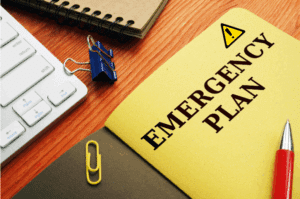Convincing C-suite executives to prioritize workplace safety requires a nuanced approach, blending strategic insight with the understanding of safety’s integral role in an organization’s success. This deeper dive into selling safety to the top echelon of corporate leadership not only outlines the challenge but also provides a structured strategy for embedding a culture of safety that aligns with business goals, enhances employee well-being, and ultimately contributes to the organization’s resilience and sustainability.
The Art of Selling Safety
Selling safety to top-level executives is akin to performing a delicate dance, where the primary focus often lies on the bottom line and strategic initiatives, potentially sidelining workplace safety. Highlighting safety as a strategic investment emphasizes its role in fostering an environment where employees are empowered and motivated, leading to notable improvements in productivity and organizational resilience.
Beyond the Budget: The Value of Safety
Safety transcends its representation on financial documents, offering immense value that directly affects an organization’s sustainability and bottom line. Framing safety in the context of risk mitigation, cost savings, and competitive advantage can align it with the strategic interests of corporate leaders, making the case for safety a compelling component of business strategy.
Aligning Safety with Business Objectives
For safety initiatives to gain traction within the C-suite, they must be seamlessly integrated with the business’s overarching goals and objectives. Demonstrating the relationship between safety and key performance indicators elevates its status from a secondary concern to a fundamental business operation, necessitating a detailed analysis of data and metrics to quantify safety’s return on investment.
Quantifying Safety’s ROI
A critical aspect of advocating for safety involves presenting concrete data—such as safety performance metrics, incident rates, and cost savings—that illustrate its financial benefits. This evidence serves as a powerful tool for safety advocates, enabling them to justify further investments in safety initiatives by highlighting their positive impact on the organization’s financial health.
Cultivating a Culture of Safety
The journey to instilling a safety culture within an organization demands commitment from the highest levels of management. Active endorsement of safety by C-suite executives encourages a top-down approach to safety compliance, fostering a workplace environment marked by accountability, engagement, and a shared dedication to safety objectives.
Persuasion and Strategy: The Path to Safety Leadership
Advocating for safety is both a strategic imperative and a persuasive effort aimed at positioning safety at the forefront of corporate decision-making. By aligning safety initiatives with business objectives, demonstrating their ROI, and communicating effectively with executive stakeholders, safety advocates can elevate the importance of safety within the corporate hierarchy, ensuring it becomes a cornerstone of the company’s operational philosophy.
In conclusion, the task of promoting safety to the C-suite is not merely about advocating for hazard reduction but about demonstrating how a strong culture of safety can enrich employee morale, boost productivity, and enhance the company’s competitive edge. Through strategic alignment, detailed analysis, and effective communication, the case for prioritizing safety can be made compelling, leading to a safer, more prosperous organizational future.
Building Safety from the Start with Prevention Through Design
In workplace safety, the best results come from stopping hazards before they ever reach employees. While training, procedures, and personal protective equipment (PPE) are important, the most effective approach is to design hazards out of the workplace from the beginning. This approach is known as Prevention through Design (PtD). What is Prevention through Design? Prevention…
Continue Reading Building Safety from the Start with Prevention Through Design
Emergency Preparedness: Staying Ready
Whether a misstep causes a fall or a natural disaster causes an evacuation, emergencies happen. Emergency preparedness and response can mean the difference in avoiding an injury or ending with a fatality. Emergencies come with little to no warning. While we may think these are extreme situations that will “never” happen to us, the reality…
Continuous Improvement and Immersive Training in Action
Construction is a dangerous business. Risks are constant, standards shift, and complacency can be deadly. For Jennifer Lastra, a U.S. Navy veteran and current CEO of 360 Immersive, corporate-style training falls far short. True safety begins with continuous improvement, supported by real engagement on the job. Training Should Go Beyond a Click-Through Box “Corporate training…
Continue Reading Continuous Improvement and Immersive Training in Action











